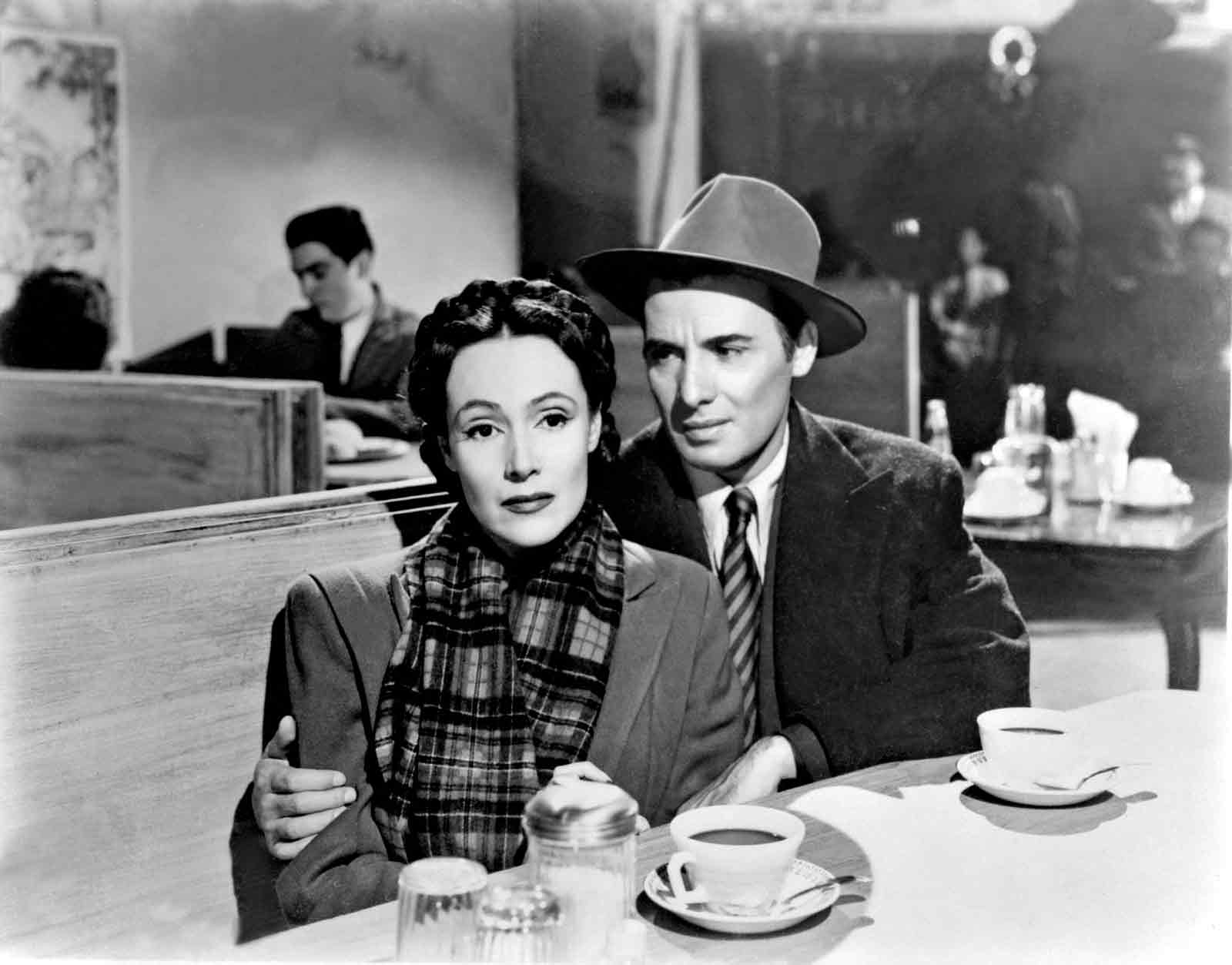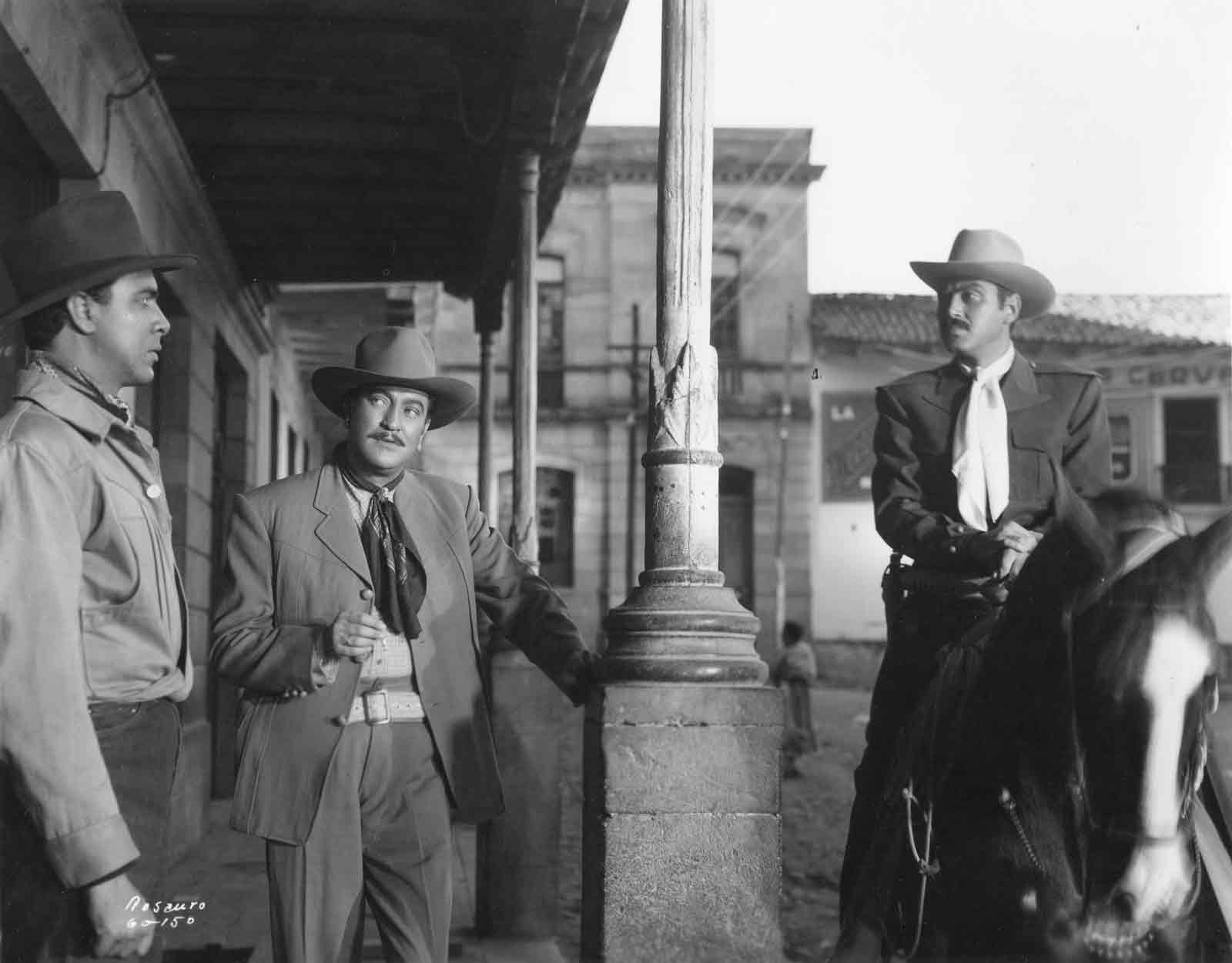The Golden Age of Mexican cinema began soon after the arrival of sound in the early 1930s and ended sometime between the mid-1950s and the early 1960s, depending on who’s telling the story. Here in the United States, the story isn’t told much at all, and when it is, the details are usually hazy. The signature achievements of the Western hemisphere’s second-most-robust film industry in the decades surrounding World War II are rarely screened in American repertory cinemas, and they remain largely absent from the DVD and streaming markets.
Diligent auteurists may have a couple of points of reference: the Spaniard-in-exile Luis Buñuel (Los olvidados, The Exterminating Angel) and the cinematic muralist Emilio Fernández (María Candelaria, Río Escondido). But who were the other major artists of Mexican cinema among their contemporaries? The surrealist Buñuel represents a comet of European modernism come to land in Mexican terrain, while Fernández’s lyricism stands for a nationalist vanguard in Mexican filmmaking, and one might reasonably expect a vast aesthetic geography to lie between these two poles.
Camped out somewhere in that landscape is Roberto Gavaldón, the subject of a thirteen-film retrospective now playing at MoMA. Best known for directing urban melodramas that borrowed freely from their northern film noir cousins, Gavaldón was a highly accomplished craftsman. He applied himself assiduously to whatever projects came his way, rising quickly to the top ranks of his profession. Though his films are too varied to reduce to a single authorial signature, the best among them often focus on characters with hidden desires and split personalities that cut them off from society and isolate them within their obsessions.
Yet even at its most psychologically intricate, his work is far from hermetic. The fate of Mexico and its people recurs as a more or less explicit thematic refrain, defined, as his characters are, by the jagged fault lines—between town and country, rich and poor, sacred and profane—that divided the country. This is especially true of the films that the director made early in his career with José Revueltas, a vital collaborator who helped Gavaldón shape his characters against the grain of archetype.
Revueltas, a writer, social critic, and activist who was repeatedly imprisoned for his work with labor and student movements, turned to screenwriting after his early novels Los muros de agua (1941) and Human Mourning (1943) made his name synonymous with Mexico’s politically engaged avant-garde. In addition to being a good way to make money, writing for the movies offered Revueltas the chance to smuggle revolutionary ideas into a mass art form.
To what degree he succeeded is questionable. The industry’s producers, even more wary of risks to the star-driven system than Hollywood’s midcentury studios were, fiercely guarded its bottom line against any radical pedagogy that might chase audiences away, making works of scathing realism like Buñuel’s Los olvidados rare achievements. But Revueltas’s firsthand knowledge of crime and punishment—by this point he had already served one of his prison sentences and tried his hand at crime reporting—made him the ideal screenwriter for Gavaldón exercises in noir, as well as other films that carried the psychological ambiguity they accomplished there beyond that genre.
The pair’s first collaboration, The Other One, released in 1946, marks a high point in Gavaldón’s career. Dolores del Río, who had returned from her acting career in Hollywood to become the embodiment of Mexican femininity in Fernández’s films, stars in a wickedly against-type double role, playing both the carnal, hedonistic widow Magdalena and her meek, depressive twin María. The penniless María bristles at the indignities of her job at a nail salon, where her wealthy male clients come expecting sexual favors. Magdalena, who has inherited her late husband’s fortune, flaunts her luxuries and chides her sister for not using sex to her advantage. Overcome with furious envy, María lures Magdalena to her humble apartment and shoots her, then swaps her clothes with the corpse to make the murder look like her own suicide. María takes Magdalena’s place and helps herself to her dead sister’s wealth, only to discover that Magdalena had attained it by murdering her husband, a crime for which María is made to pay by a cruel twist of poetic justice.
Revueltas found many ways to spike The Other One’s doppelganger plot with motifs of class conflict. The destitute María sees in Magdalena an embodiment of the high life she could be enjoying among Mexico’s nouveau riche. Yet once she slips into the ranks of the bourgeoisie, she immediately discovers that corruption is commonplace and she is not the only one who has killed to get there. For Gavaldón’s part, the doubling device serves as a pretext for one of his favorite compositional effects: adding depth to the frame with mirrors. His shooting style throughout the film draws on Hollywood noir and amplifies its stylistic gestures, resulting in a visual field lush with expressionistic swaths of light and darkness, traversed by a conspicuously mobile camera.
Advertisement
Gavaldón and Revueltas would continue to mine this vein of cine negro for the next six years, a period coinciding with the rule of Miguel Alemán, Mexico’s first civilian president. With their luridly twisting plots, cutthroat bourgeois antiheroes, and overpowering fatalism, movies like The Kneeling Goddess (1947), In the Palm of Your Hand (1951), and Night Falls (1952) can be read as anxious meditations on the rise of a new postwar Mexican elite, suddenly and suspiciously wealthy, over which Alemán presided. In their mistrust of the new pillars of Mexican society, these films also uncover deep new shades of character in most familiar stars of the Golden Age, beginning with Del Río’s startlingly cruel, sour, and even masochistic turn in The Other One.
This sharply critical perspective held true when Gavaldón and Revueltas turned their attention to rural themes. Rosauro Castro (1950) features Pedro Armendáriz in the title role as a brutal cacique strongman presiding over the political and economic life of a small town. Best known as the male lead in a number of Fernández films, in which he was often paired in tragic love stories with del Río, Armendáriz embodied an ideal of indigenous nobility and masculine virtue. By casting him as the murderous Castro, Gavaldón inverted that persona, making him stand in for the corruption of rural society and the failure of the Mexican Revolution to liberate the peasantry.
Strutting through town with his chest puffed out and the front of his sombrero brashly upturned, spurs crashing through the halls of the local government that he controls through his hand-picked mayor, Castro cuts a blustering figure, virtually begging for comeuppance. He refuses to recognize that his rule is vulnerable—even though a federal prosecutor has arrived to investigate the murder of a political opponent; the victim’s family is out for vengeance; and a farmer who ran afoul of Castro has returned to town in defiance of his banishment. From its very first image, dominated by the town’s looming clock tower, the film insinuates that Castro’s time is up.
The most elegantly constructed of Revueltas and Gavaldón’s collaborations, Rosauro Castro unfolds over the course of a single day. Gavaldón’s camera relishes the spatial layout of the town, shooting in deep focus, breaking up the frame through doorways and windows, and exaggerating Castro’s menacing height atop his horse, an advantage memorably upended in a scene in which the mother of his slain enemy curses him and manages to cow him from below through sheer maternal righteousness. Castro’s antagonists are introduced and tracked as the hours of the day tick by, but the focus remains on the antihero himself.
Unlike other films of the period that take aim at caciquismo, including Fernández’s Río Escondido and Gavaldón and Revueltas’s own Soledad’s Shawl (1952), the drama’s center of gravity lies in the fall of the strongman rather than the moral victory of his enemies. The audience is forced into uneasy intimacy with Castro, watching how he rages at his wife, sneaks off to his mistress, sulks under the reproaches of his pious mother, and lavishes affection on his child. A more conventional film might have framed Castro as an anachronism, soon to be swept away by the forces of state-led progress here personified by the dutiful prosecutor. But this figure never comes close to touching Castro.
The prosecutor is nowhere on the scene when Castro meets his end. Instead, it’s the corrupt mayor who comes to see his patron as an untrustworthy loose cannon and deals him the coup de grâce, leaving open the possibility that Castro’s former crony will simply step in and take his place. A rare specimen among the Golden Age films that deal in social criticism, Rosauro Castro shuns idealism almost completely, diagnosing the disease afflicting the Mexican backcountry without assuring its viewers that a cure is on its way.
Frustrated with his lack of control over the films he wrote, Revueltas more or less quit screenwriting after The Hidden One (1956), his last movie with Gavaldón. Although the director’s later work doesn’t match the achievement of their collaborations, it still constitutes an impressive oeuvre, especially given the overall decline of Golden Age filmmaking. The industry entered a death spiral in the late Fifties as Mexican films lost ground to television and Hollywood competition. As audiences shrunk, production money was increasingly restricted to cheap, quick projects that adhered to proven formulas. Gavaldón was one of the few veterans who could still pull off ambitious films in those years. From this period of his career, MoMA’s retrospective showcases a trilogy of films adapted from the fiction of the mysterious author B. Traven (the most celebrated film based on his work is John Huston’s 1948 The Treasure of the Sierra Madre).
Advertisement
In this endeavor, Gavaldón joined forces with a new circle of collaborators, including the legendary cinematographer Gabriel Figueroa. These films embrace elements of a populist nationalism distinct from Revueltas’s Marxist outlook: Macario (1960) runs riot with day-of-the-dead imagery, and Rosa blanca (1961) climaxes with the Cardenista oil nationalizations of the 1930s (a choice controversial enough in the early Sixties to result in a decade-long ban on the film). Though they lack much of the psychological relish of Gavaldón’s work with Revueltas, these films contain some of the most visually dazzling set pieces of the director’s career.
According to the critic and filmmaker Ariel Zúñiga, Gavaldón’s “disorganized notes, unrealized scripts, 16mm film experiments, and conversational statements” suggest that into the twilight of his career, he cherished an ambition to make an epic about the Mexican Revolution. His strongest work was certainly far behind him at that point, yet it’s tempting to imagine how he might have approached such a task. Gavaldón left behind no single testament to sum up the country where he lived and worked, but his best films shine a light on Mexico’s dark alleys and hinterlands, where fate thwarts his flawed characters’ desires and deals them their bitter defeats.
The film series “Roberto Gavaldón: Night Falls in Mexico” is at the Museum of Modern Art, New York, through May 5.




